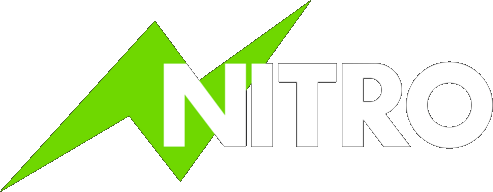🔥 Free 25% more CPU for all Accounts!
Redis and Memcached are powerful object caching systems that can drastically improve site performance, but which one is the best fit for WordPress?
What is Object Caching?
WordPress object caching stores database queries so that they don’t need to be fetched again. This speeds up your site by reducing the load on your database.
WordPress generates a lot of dynamic content and querying the database every time someone loads a page can slow things down—especially on high-traffic sites. Object caching eliminates the need for repetitive queries by storing them in memory (RAM), making your site faster and more scalable.
What is Redis?
Redis is a powerful in-memory data structure store used as a database, cache, and message broker. It supports various data structures like strings, hashes, lists, and sets, making it highly versatile.
Key Features of Redis:
- In-memory store: Keeps data in memory for fast access.
- Persistent caching: Data can persist between server reboots.
- Data structures: Supports complex data types, making it versatile.
- Advanced features: Supports replication, high availability, and clustering.
Pros of Redis:
- Persistent Storage: Redis can save data to disk, allowing for cache persistence even after a server reboot.
- Flexibility: It handles more complex data types and is highly customizable.
- Scalability: Redis supports replication and clustering, making it great for scaling large WordPress sites.
- Faster with Complex Queries: Redis shines when handling complex database interactions due to its advanced data structure support.
Cons of Redis:
- Resource Intensive: Redis uses more memory than Memcached due to its richer feature set.
- Requires Configuration: Setting up Redis requires more technical knowledge compared to Memcached.
What is Memcached?
Memcached is a lightweight, high-performance, distributed memory object caching system. It’s simpler and more lightweight than Redis, making it easier to set up and maintain. Memcached is often used to speed up dynamic web applications by reducing the load on a database.
Key Features of Memcached:
- In-memory store: Data is stored in memory, so retrieval is fast.
- Distributed caching: Can scale across multiple servers to handle large traffic volumes.
- Simple and Fast: Memcached is designed for simplicity and speed, making it easy to set up.
Pros of Memcached:
- Lightweight: Memcached is simpler and uses fewer resources compared to Redis.
- Easy to Set Up: It’s easier for beginners to configure Memcached.
- High Speed: Memcached is incredibly fast for basic key-value caching operations.
- Distributed System: It’s designed to work in a distributed environment, making it ideal for websites with high traffic.
Cons of Memcached:
- No Persistence: Unlike Redis, Memcached doesn’t save data to disk, so all cached data is lost if the server restarts.
- Limited Data Types: Memcached is a simple key-value store, so it can’t handle more complex data structures.
- No Built-in Replication: Memcached lacks advanced features like replication and clustering, which makes it less ideal for large, complex sites.
Redis vs Memcached: Side-by-Side Comparison
| Feature | Redis | Memcached |
|---|---|---|
| Data Types | Supports complex data structures (strings, hashes, lists, sets) | Simple key-value pairs |
| Persistence | Data can persist to disk | No persistence, data is lost on restart |
| Performance | Handles complex queries and data more efficiently | Very fast for basic key-value storage |
| Scalability | Supports replication and clustering for scalability | Built for distributed caching |
| Ease of Setup | Requires more configuration | Easier to set up for beginners |
| Memory Usage | More memory-intensive due to richer features | Lighter on resources |
| Use Cases | Ideal for complex, high-traffic sites that need persistence | Best for simple caching in lightweight apps |
When to Use Redis for WordPress
Redis is ideal if your WordPress site is large, dynamic, and experiences high traffic. If you’re running a WooCommerce store, membership site, or any site with complex user interactions, Redis is the better choice. Here’s why:
- Data Persistence: If you need your cached data to survive server reboots, Redis is the best option.
- Advanced Caching: Redis supports advanced data structures, which can make caching more efficient for large, complex websites.
- Scalability: Redis offers replication and clustering, making it easier to scale your WordPress site to handle more traffic.
For high-traffic sites or sites that experience heavy database usage, Redis helps reduce server load and speed up page load times.
When to Use Memcached for WordPress
Memcached is a great choice if you’re looking for a lightweight, easy-to-configure caching solution. It’s ideal for smaller websites, blogs, or simpler WordPress installations that don’t require advanced caching features.
- Simple Sites: Memcached is perfect for sites with fewer dynamic interactions, like blogs or small business websites.
- High Speed, Low Resource: If you want a caching system that’s fast and doesn’t use much memory, Memcached is a solid choice.
- Ease of Use: Memcached’s straightforward setup makes it perfect for beginners or those who don’t want to deal with complex configurations.
Memcached is also commonly used for sites where data persistence isn’t a priority, and server reboots are infrequent.
Final Thoughts
Both Redis and Memcached are powerful tools for improving your WordPress site’s performance. Redis shines in more complex environments that need scalability and data persistence, while Memcached excels in simplicity, speed, and low resource usage.
